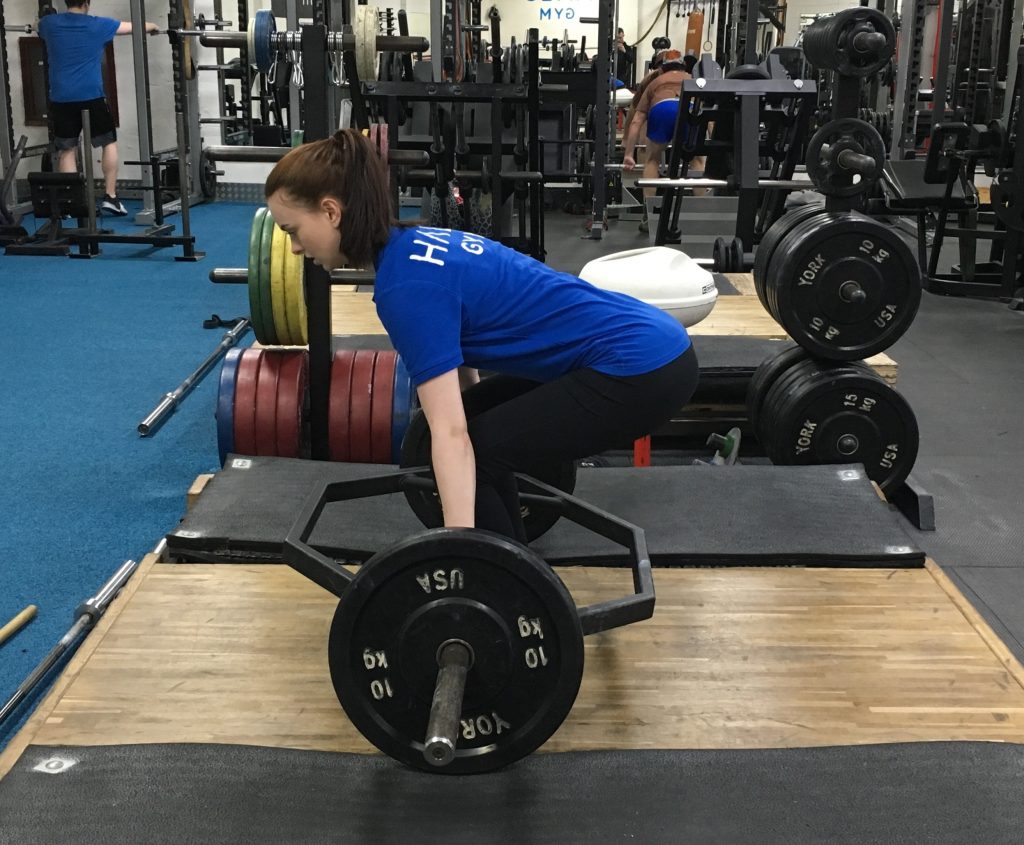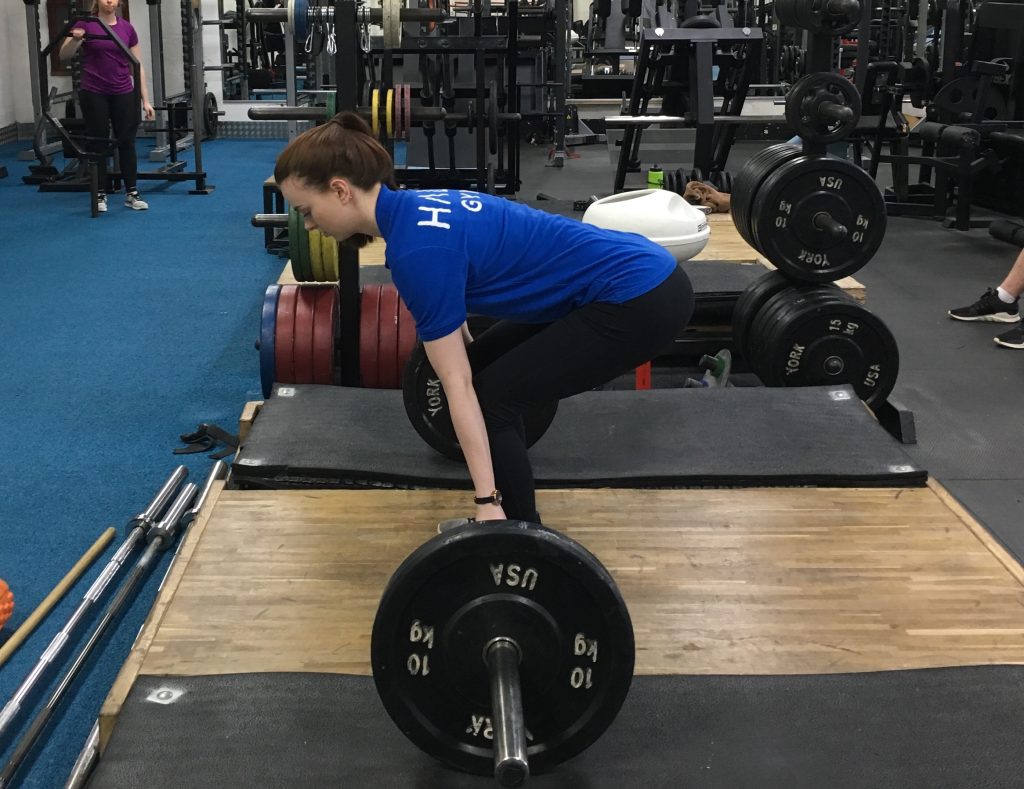WHY TRAP BAR DEADLIFT MAY BE FOR YOU
By Catherine Symons

In an investigation conducted by Swinton PA, Stewart A, Agouris I, Keogh JW & Lloyd R, results showed that when comparing lifts of a conventional barbell deadlift with the use of a trap bar, athletes were able to lift a heavier 1RM using the trap bar. There have been many other studies that support these results too. I myself have also noticed that my 1RM for deadlift is greater when using a trap bar.
Now of course these studies are aimed at non powerlifters, but a trap bar deadlift shouldn’t be seen as any less of a deadlift to a conventional technique for a non-competitor. So why is it that using a trap bar could benefit you?
The position that your body is put into when using a trap bar is different to that of a conventional barbell lift. Having to sit in a lower position you are more fixed in a trap bar position, decreasing the risk of lumbar spine curvature. Results also showed lower peak moments at the lumbar spine, hips and ankles, with an increase at the knees.

If you find it difficult, when using a conventional deadlift technique (pic above), just as you lift the bar off the floor, trap bar could be for you as this is the hardest part of the movement, so therefore a great accessory move.
A strength curve of a trap bar deadlift would be similar to that of a sumo deadlift where it is also hardest to get the bar off the floor. However if you find the hardest part of a conventional deadlift midrange, just as the bar passes the knees, this may not be a move that would benefit you as a main component, as it is apparent that the movement of the trap bar deadlift compared to a conventional deadlift has a much higher velocity.
In essence if you can get the weight off the floor straight away with a trap bar you should have no problems with the rest of the movement.
I personally train deadlifts twice a week, one of them being the conventional deadlift, and the other trap bar as I feel this is a great accessory move for my own deadlifting goals. I also prefer the feel of the trap bar deadlift as it allows me to lift a little heavier whilst feeling more comfortable.
It may be worth giving it a try to see if the trap bar could benefit your lifting goals.
References:
– A biomechanical analysis of straight and hexagonal barbell deadlifts using submaximal loads https://www.ncbi.nlm.nih.gov/pubmed/21659894

About the author
Catherine Symons is a qualified level 3 personal trainer, and currently studying to specialise in sports performance enhancement. Having competed from a young age in middle distance running, including representing Kent in many cross country championships, she understands what hard work is.
For the past two years she has begun to move away from competing in distance running, and instead found a passion in strength training. Combining the two disciplines together, Catherine has a good knowledge of many aspects of sports training.
Catherine’s passion is to help athletes and the ‘everyday gym goer’ to perform to their absolute best, in the most efficient way possible, to reach their goals and to achieve great results.


